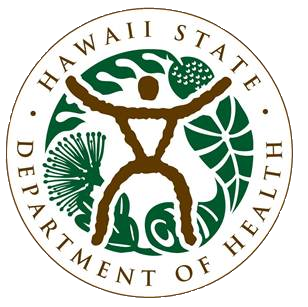WIIN Results – Honolulu County Schools – Stage 1
TEST RESULTS – Honolulu County Schools – Stage 1 (2021)
WIIN Project Testing for Lead in Drinking Water at Schools and Child Care Facilities
Below are the test results to date for the WIIN project testing of lead in drinking water at Honolulu County schools. Use the search bar in the upper right of the table to search by Facility name or ID number. Click on the arrow to the left of the facility name to expand results. Initial results above the project action level of 15 ppb will have follow-up testing. Initial sampling results are in the top table. Follow-up sampling results are in the bottom table. Results are updated as they are received from the laboratory. Information on how to interpret the results is below.
INITIAL SAMPLING RESULTS
FOLLOW-UP SAMPLING RESULTS
Sample analysis has been performed by the State Laboratories Division of the Environmental Health Analytical Services Branch of the Department of Health. The State Laboratories Division is provisionally certified by EPA for this drinking water analysis effective 8/9/19 due to deficiencies in the building which are currently being addressed.
HOW TO INTERPRET RESULTS
SOURCE ID NUMBER: This is a unique number used to identify each water source (i.e. a specific sink, drinking fountain, water cooler, or other fixture) at a facility.
FLOOR & ROOM NUMBER: Are used to locate each water source within a facility.
INITIAL LEAD TEST RESULT: Parts per billion (ppb) is a measure of the concentration of lead within a water sample. Sources with “<2.5” means that the lab did not detect lead over 2.5 ppb, which is the lowest amount that can be detected with the test.
This project used 15 ppb as the action level. The action level is the level above which the tap must be blocked off and restricted from use until the problem can be corrected.
All water sources above the action level of 15 ppb will be taken out of service. Follow-up testing will be performed where two additional samples are collected to help identify the source of lead.
FOLLOW-UP LEAD TEST RESULT: Follow up sampling is performed on all water sources that initially tested above the project action level and includes a repeat first draw sample and a flushed sample. First draw samples generally represent the impact of lead from the fixture/faucet. Flushed samples generally represent the impact of lead from the plumbing deeper in the wall.
If sampling shows lead in the first draw sample but not the flushed sample, this is confirmation that the fixture is causing the lead contamination. If there is detectable lead in the flushed sample, the plumbing deeper within the building may be the source of lead.
Lead levels in drinking water can frequently change and in some cases, the follow up sampling may show less lead than the initial samples. However, any tap that tested above the project action level during any of the sampling has the potential to expose children to lead and should be replaced, removed from service or converted to a handwash only station. In some cases, a certified lead-free filter can be safely used to prevent lead exposure. Filters must be maintained and changed according to manufacturer’s instructions.
Because lead is harmful to children even in small amounts, schools and childcare facilities may choose to take corrective action to decrease the lead present in the drinking water for taps with levels less than 15 ppb. Corrective action for these moderate levels of lead include such options as:
- Flushing the water before use until a uniform temperature is reached (no less than 30 seconds)
- Using a filter certified to remove lead
- Frequent cleaning of aerators
- Using the identified fixture for handwashing only and using bottled water for drinking/cooking
- Replacing the faucet or plumbing with certified lead free materials
To learn more about corrective action, please visit the Hawaii WIIN Project Corrective Action Webpage.
For questions about corrective action, fixture or plumbing replacement or evaluation, please contact the Hawaii Department of Health’s Safe Drinking Water Branch at 808-586-4258.
MORE INFORMATION:
Children can be exposed to lead from many sources in their homes and communities.
- If you are concerned about your child’s potential lead exposure please contact your child’s doctor to discuss blood lead testing.
- If you have general questions about childhood lead exposure please visit lead.hawaii.gov
- If you have questions about this project or the results, please contact the Hawaii Childhood Lead Poisoning Prevention Program (HI-CLPPP) at (808) 586-4345 or visit the project webpage at health.hawaii.gov/WIIN.
